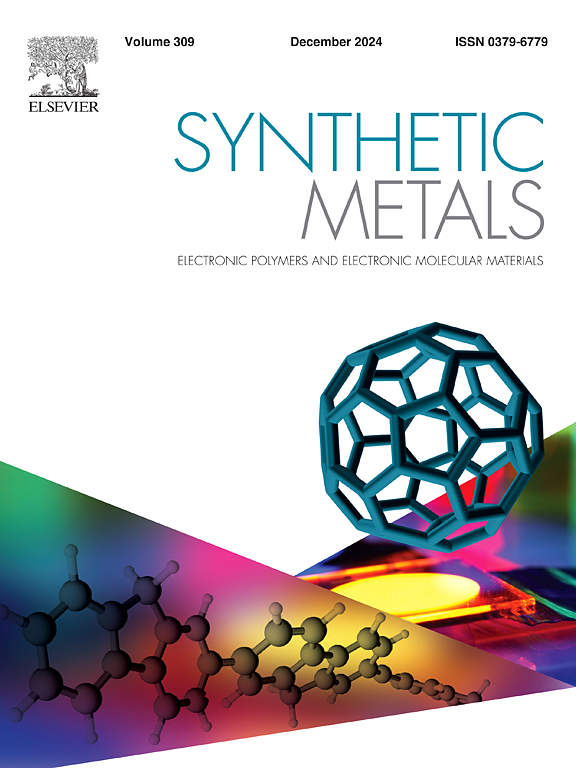Branched carbazole based derivative as very efficient host material for third generation OLED devices
IF 4.6
3区 材料科学
Q2 MATERIALS SCIENCE, MULTIDISCIPLINARY
引用次数: 0
Abstract
Organic light-emitting diodes (OLEDs) have played a pivotal role in advancing modern technologies, particularly in the fields of display and lighting, with widespread applications in smartphones, tablets, televisions, and automotive systems. As a cutting-edge technology, OLEDs have driven the exploration and development of innovative functional materials. In this study, we report the design and synthesis of a new branched carbazole-based derivative, specifically DM282, tailored for use as host material in OLEDs. The compound exhibits a combination of desirable properties, including excellent thermal stability with decomposition temperature surpassing 400 °C, glass transition temperature of around 168 °C, broad optical band gap greater than 3.5 eV, and short exciton lifetimes. Owing to this favorable combination of characteristics, the material was employed for formation of host layers in green, thermally activated delayed fluorescence based OLED devices. One device incorporating DM282 demonstrated superior electroluminescent performance with external quantum efficiency (EQE) of 13.6 %, current efficiency of 30.9 cd/A and a power efficiency of 16.1 lm/W, while also operating at a reduced driving voltage. The branched carbazole-based host described herein combines ease of synthesis, cost-effectiveness, and outstanding optoelectronic properties, and is highly promising candidate for the development of next-generation, high-performance, and economically viable OLED display technologies.
支化咔唑衍生物作为第三代OLED器件的高效宿主材料
有机发光二极管(oled)在推进现代技术方面发挥了关键作用,特别是在显示和照明领域,广泛应用于智能手机,平板电脑,电视和汽车系统。作为一项前沿技术,oled带动了创新功能材料的探索和发展。在这项研究中,我们报告了一种新的支链咔唑衍生物的设计和合成,特别是DM282,专门用于oled的宿主材料。该化合物具有优异的热稳定性,分解温度超过400°C,玻璃化转变温度约为168°C,光学带隙大于3.5 eV,激子寿命短。由于这种有利的特性组合,该材料被用于在绿色热激活延迟荧光OLED器件中形成宿主层。一种采用DM282的器件表现出优异的电致发光性能,其外量子效率(EQE)为13.6 %,电流效率为30.9 cd/A,功率效率为16.1 lm/W,同时工作在较低的驱动电压下。本文描述的支链咔唑基宿主具有易于合成,成本效益和出色的光电性能,是开发下一代高性能且经济可行的OLED显示技术的非常有前途的候选者。
本文章由计算机程序翻译,如有差异,请以英文原文为准。
求助全文
约1分钟内获得全文
求助全文
来源期刊

Synthetic Metals
工程技术-材料科学:综合
CiteScore
8.30
自引率
4.50%
发文量
189
审稿时长
33 days
期刊介绍:
This journal is an international medium for the rapid publication of original research papers, short communications and subject reviews dealing with research on and applications of electronic polymers and electronic molecular materials including novel carbon architectures. These functional materials have the properties of metals, semiconductors or magnets and are distinguishable from elemental and alloy/binary metals, semiconductors and magnets.
 求助内容:
求助内容: 应助结果提醒方式:
应助结果提醒方式:


